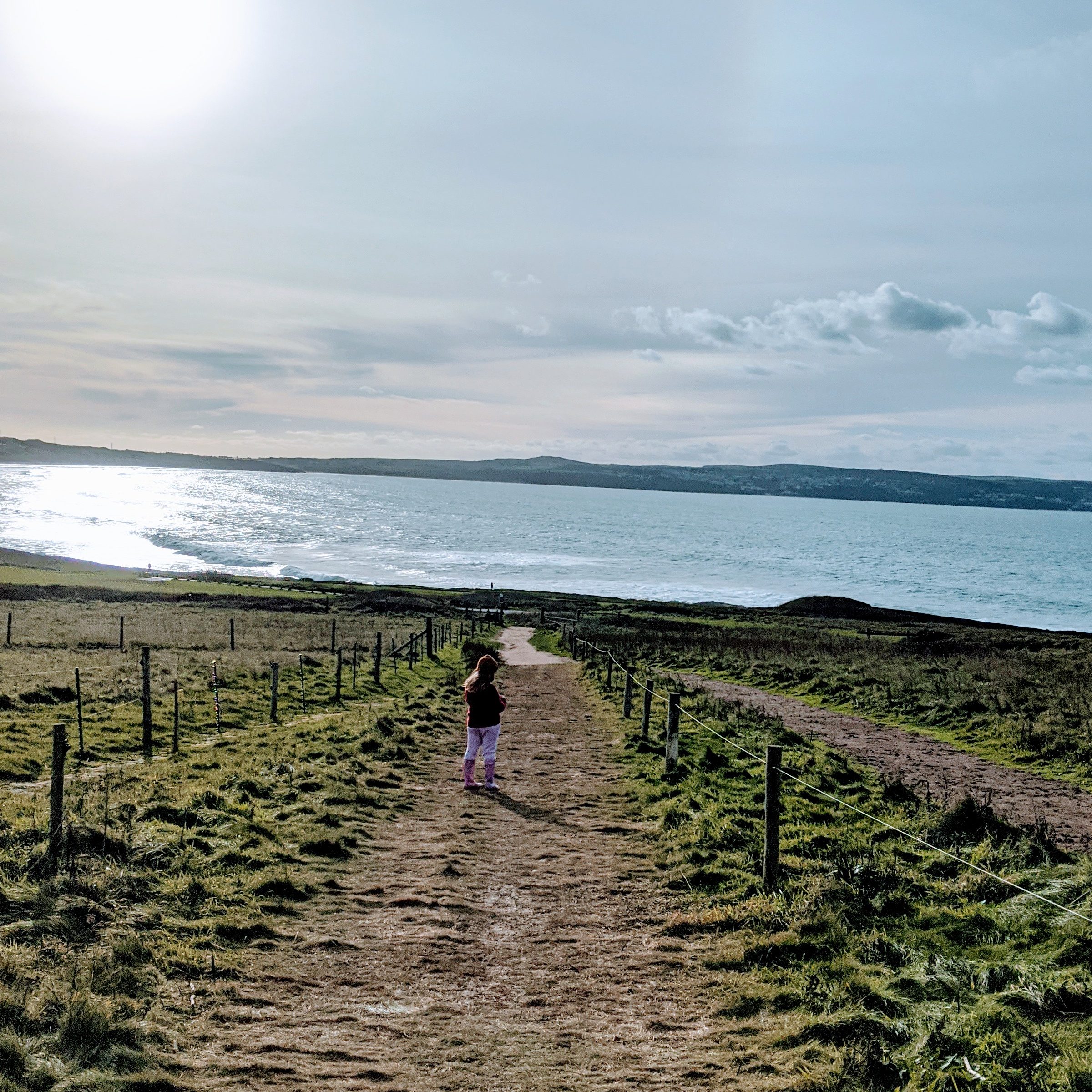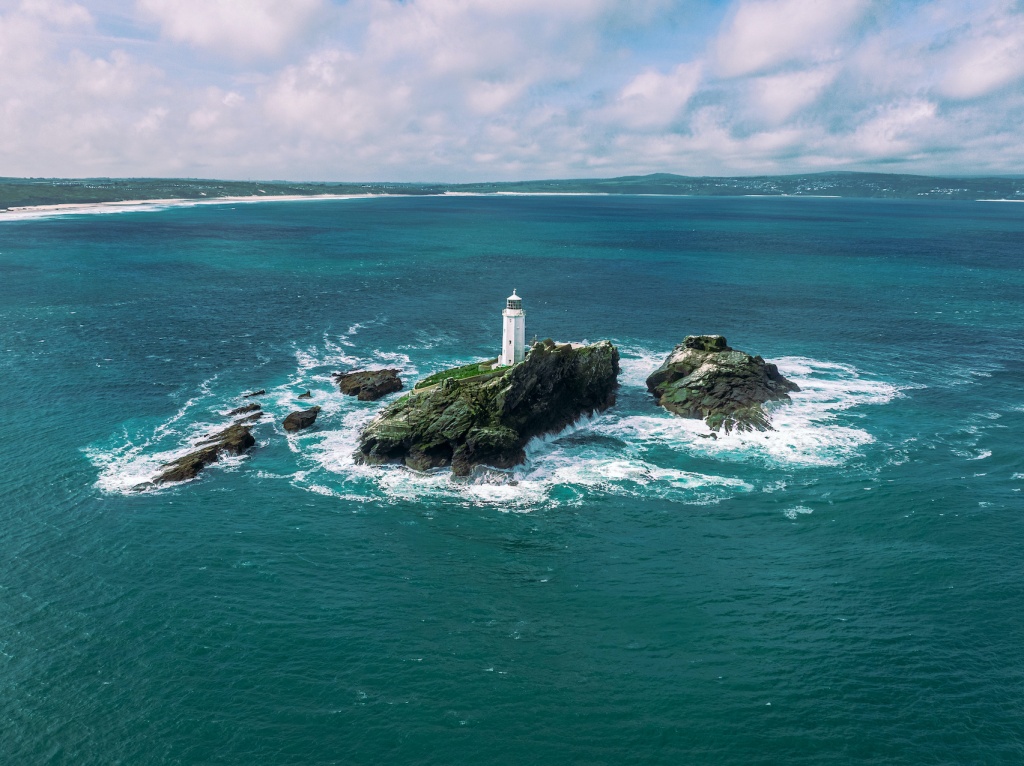
Godrevy Beach
Godrevy beach is renowned for its natural beauty, iconic lighthouse, amazing wildlife and is a well known surfers paradise.
The area is dominated by the striking Godrevy Lighthouse, which is said to be the inspiration for ‘Virginia Woolf’s’ novel ‘To the Lighthouse’. Built in 1858, the lighthouse adds historical charm to this wild and rugged landscape, and can be enjoyed as far as St Ives.
Godrevy beach is not only a refuge for tourists, walkers, families, and more, but also a wildlife haven. Grey seal colonies often bask on the rocks near Godrevy Island, and within the shelter of ‘Mutton Cove’.
Godrevy Head has some of the best coastal heathland in Cornwall, with many species of plant, animal and insect life. Part of the headland, along with the coast to the east, was designated as part of the Godrevy Head to St Agnes SSSI (Site of Special Scientific Interest).
Godrevy beach lies within the Cornwall Area of Outstanding Natural Beauty (ANOB), the coast path winds its way along the cliffs, providing picturesque walking trails with panoramic views. Managed by the National Trust, Godrevy ensures a blend of conservation and recreation, making it a must-visit destination for those seeking tranquility and the natural wonders of Cornwall.

Godrevy Island and The Stones
Godrevy Island lies approx three hundred yards off Godrevy Point. The uninhabited island is the site of Godrevy Lighthouse.
The island covers an area of 12 acres and is home to pipits, seagulls, and oystercatchers. Its vegetation is dominated by grasses, with primroses and sea thrift flowering in the spring.
Visitors are not able to visit the island and lighthouse, however there is a boat service in St Ives that offers trips around the lighthouse and island. Landings may only be made on the island with the permission of Trinity House.
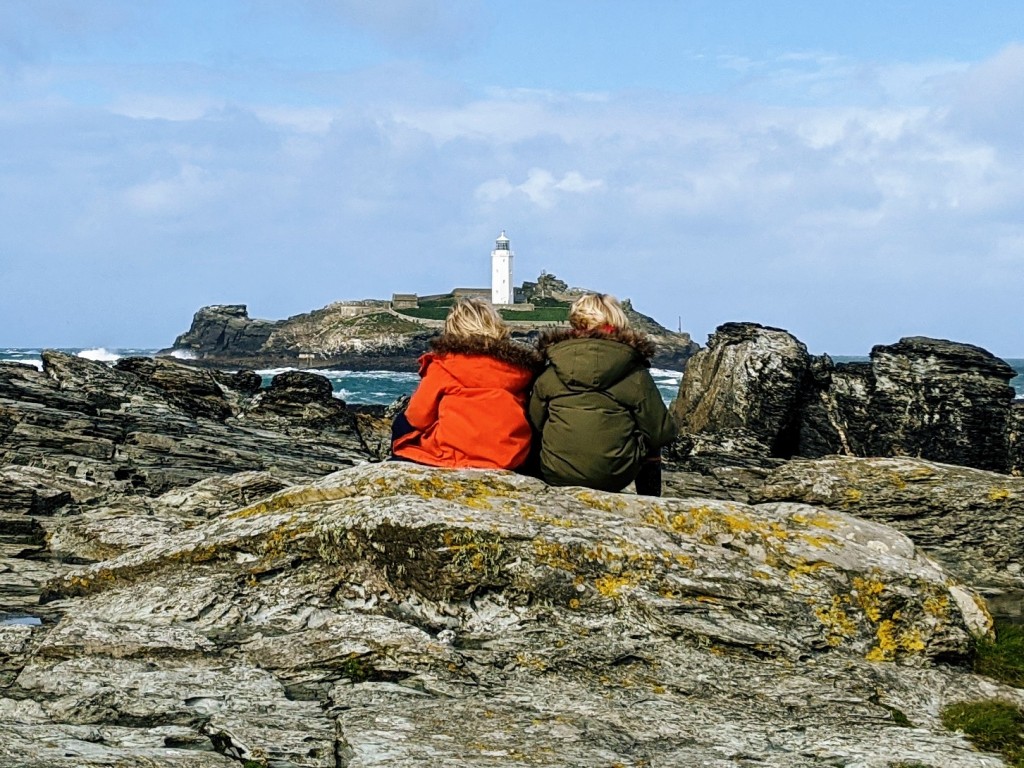
Seaward of Godrevy Island is a submerged reef known as The Stones, which extends for approximately 1 mile across the eastern approach to St Ives Bay. It has been the site of many sinkings over the years but it was not until the disastrous loss of the SS Nile on 30 November 1854, with the tragic loss of all aboard, that Trinity House was pressured to construct a lighthouse on the island.
The lighthouse was manned until 1939, and in recent years the old lighthouse was replaced with a steel structure carrying two LEDs shining out to sea with an 8-mile range.
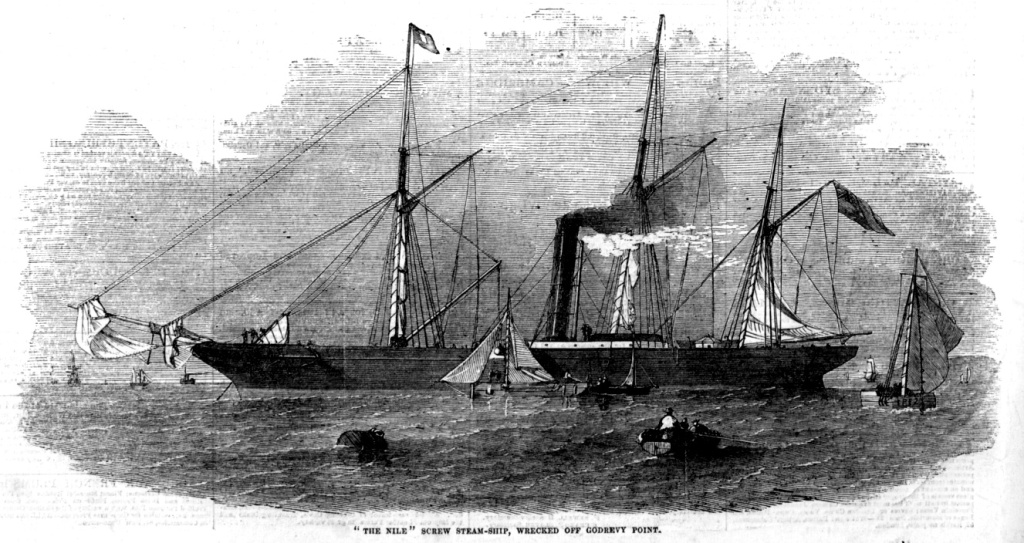
Wildlife at Godrevy
Godrevy beach is well known for its resident seal population, however there is also so much more wildlife to enjoy in the area. While exploring rock pools at low tide, you might encounter small fish, crabs, sea anemones, and other fascinating marine life. Dolphins, tuna, sharks and even whales can also be spotted, so remember to pack the binoculars!
The cliffs around Godrevy beach provide important breeding and foraging grounds for seabirds. Visitors can spot a variety of species, including gulls, fulmars, cormorants, pipits, and even peregrine falcons. The South West Coast Path along the cliffs offers excellent opportunities for birdwatching.
The coastal heathland and dunes also support a variety of wildflowers, insect life and beautiful butterflies. The area really is a wonderful location for enjoying Cornwall’s rich wildlife.
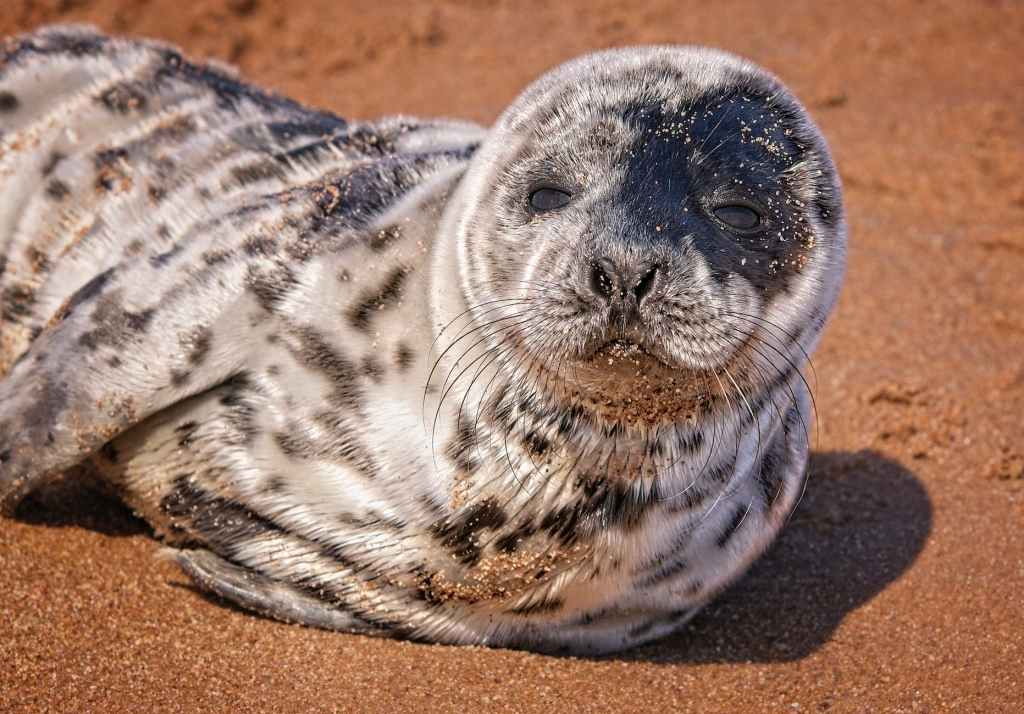
Godrevy in original Cornish?
Godrevy in Cornish is Godrevi, meaning small farms.
Are there seals at Godrevy now?
Mutton Cove at Godrevy Point in West Cornwall is one of the very best locations to observe wild seals, especially during low tide when they bask on the beach. The cove is a sheltered bay where a resident colony of grey seals can be viewed from the cliff tops.
There are many seal pups to enjoy during the months August – December where you may find pups also along Godrevy beach. Please do not approach and keep dogs away to protect these vulnerable animals.
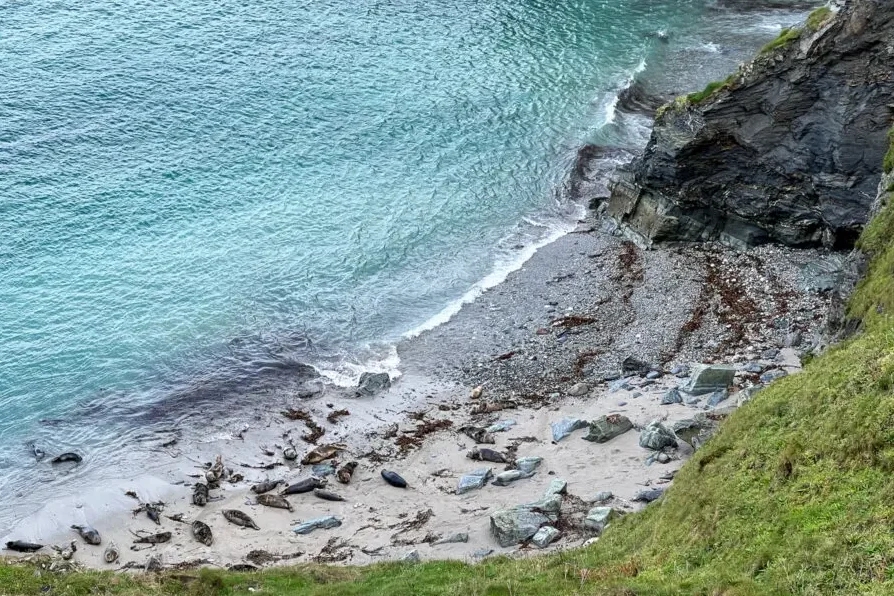
Is Godrevy car park free?
There are two National Trust car park at Godrevy Beach: a smaller, busier car park just inland, and a larger car park near the headland. Both are free for National Trust members, or pay and display otherwise.
Are dogs allowed on Godrevy Beach?
Dogs are welcome on Godrevy Beach except between 1 May and 30 September 10-6pm when a seasonal dog ban is in place.
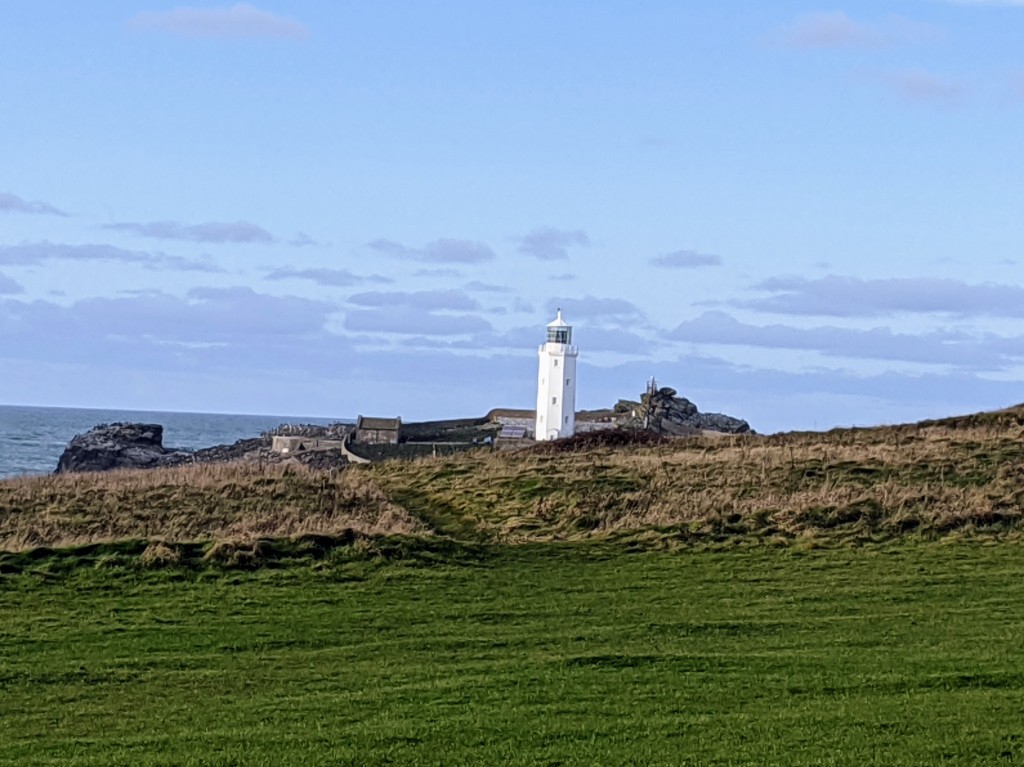
Is Godrevy Lighthouse manned?
Godrevy Lighthouse was the subject of ‘To The Lighthouse’ (1927) by Virginia Woolf. The lighthouse was manned until 1939. In 1995 solar power was installed and in 2012 the old lighthouse was replaced with a steel structure carrying two LEDs shining out to sea with an 8-mile range.
How many steps are in the Godrevy Lighthouse?
Godrevy Lighthouse features 182 steps. However you are not able to visit or go into the lighthouse itself.

Address: Godrevy Beach, Hayle, TR27 5ED
Parking: There is a National Trust car park available next to Godrevy beach. First car park open year round (limited space). Extra field parking open in the warmer months.
Facilities: There is a cafe open most days, and toilet facilities with visitor toilets in the car park field on the headland with an accessible toilet in headland parking area.
Lifeguard Cover: Daily 14 May – 25 September, 10am-6pm.
Dogs: Please keep dogs on leads at all times when visiting Godrevy Beach due to seal pups in the area. Dog restriction on the beach 1 July – 31 August, 10am – 6pm.
